How the US Navy tried — and failed — to sink carrier USS America for weeks
The US Navy's carrier fleet is known for its impressive firepower and resilience in battle.
The fleet's durability is attributed partly to the sacrifice of its predecessor, USS America.
The Navy tried for weeks to sink the "Big A," eventually resorting to scuttle the ship onboard.
The US Navy's supercarrier fleet is famed for its offensive power, massive size, and versatility in battle.
US aircraft carriers led their strike groups to the front lines of global conflicts and are frequently used to intimidate US adversaries.
In June, Nimitz-class carrier USS Dwight D. Eisenhower left the Middle East after spending months fighting Iran-backed Houthi rebels in the Red Sea. Earlier this year, USS Gerald R. Ford returned to its homeport after the Pentagon sent the first-in-class supercarrier and its strike group to the coastal waters of Israel after the Hamas attacks on October 7, 2023.
The durability of America's current carrier fleet is due in part to the sacrifice of one of its predecessors: USS America.
The penultimate conventionally-powered aircraft carrier
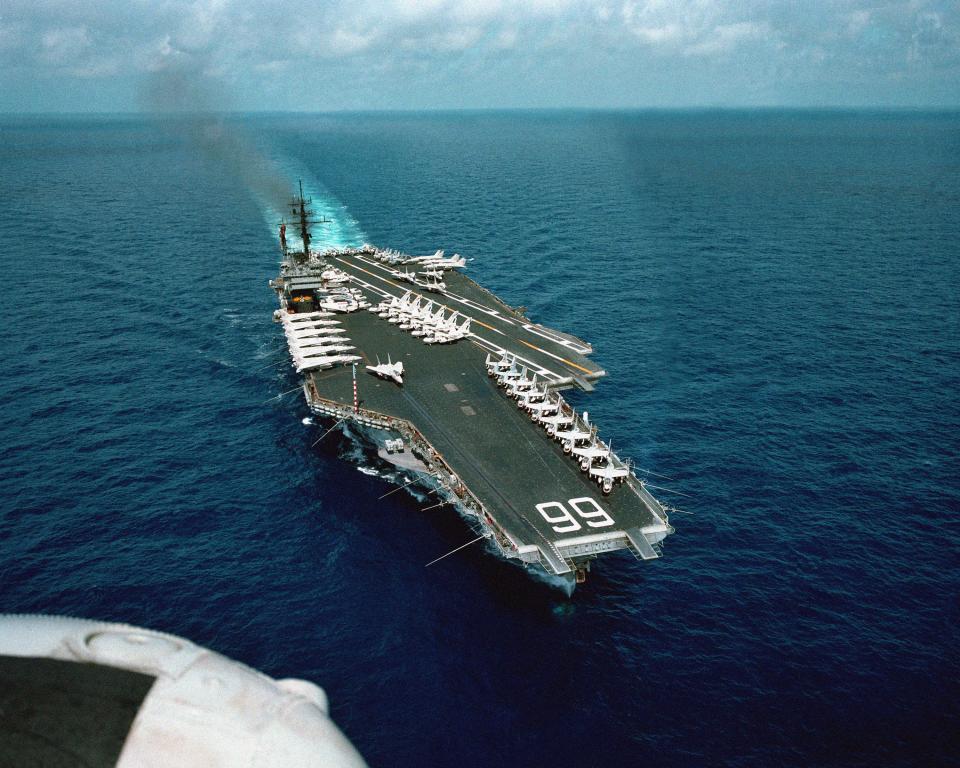
USS America was initially ordered as one of the six nuclear-powered aircraft carriers in the Enterprise class. However, skyrocketing production costs forced the Navy to redesign the ship to use an older system of fuel-burning boilers that powered the steam turbine-driven propellors.
It was the second to last conventionally powered carrier, followed by USS John F. Kennedy before the Navy began building its nuclear-powered carrier fleet.
The America was one of three Kitty Hawk-class carriers, including the lead ship and USS Constellation. Its keel was laid down in January 1961 at the Newport News Shipbuilding in Virginia and was commissioned at the Norfolk Naval Shipyard four years later.
The $400 million carrier, fittingly nicknamed the "Big A," measures more than 1,000 feet long with a 4-acre flight deck that could accommodate up to 100 aircraft.
The America was first designated as an attack aircraft carrier and reclassified to an aircraft carrier in 1975 following a major overhaul the previous year.
Improving safety and efficiency
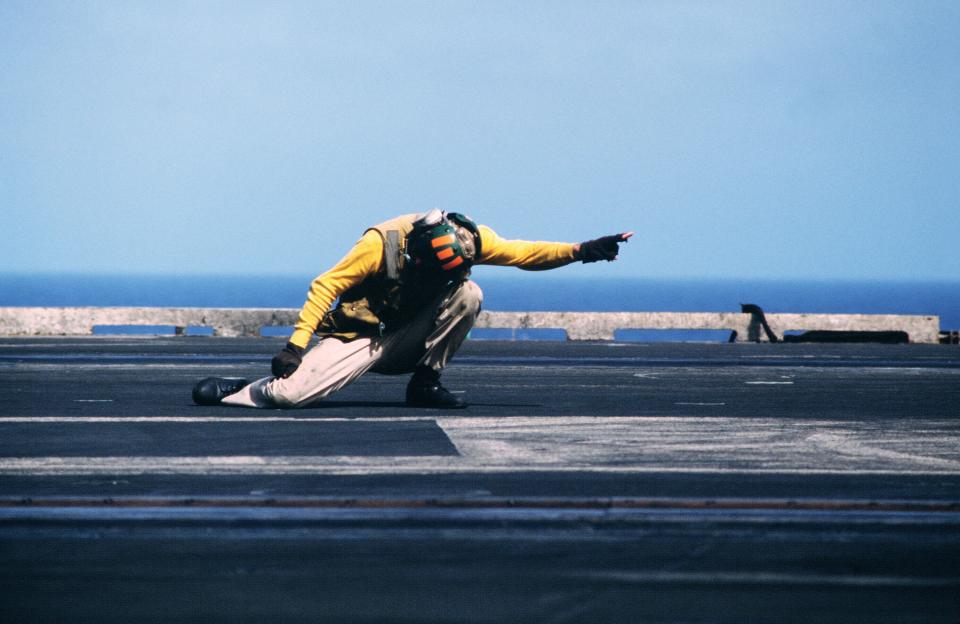
The expansive flight deck of the USS America introduced the feature of an angled flight deck, which increased the ship's efficiency by allowing aircraft to catapult off the bow while simultaneously landing other aircraft to land nearby.
The ship was also equipped with a Mirror Landing System, highly advanced control and landing technology consisting of mirrors and lights that safely guided pilots back onto the carrier's deck and reduced accidents.
The Big A in service
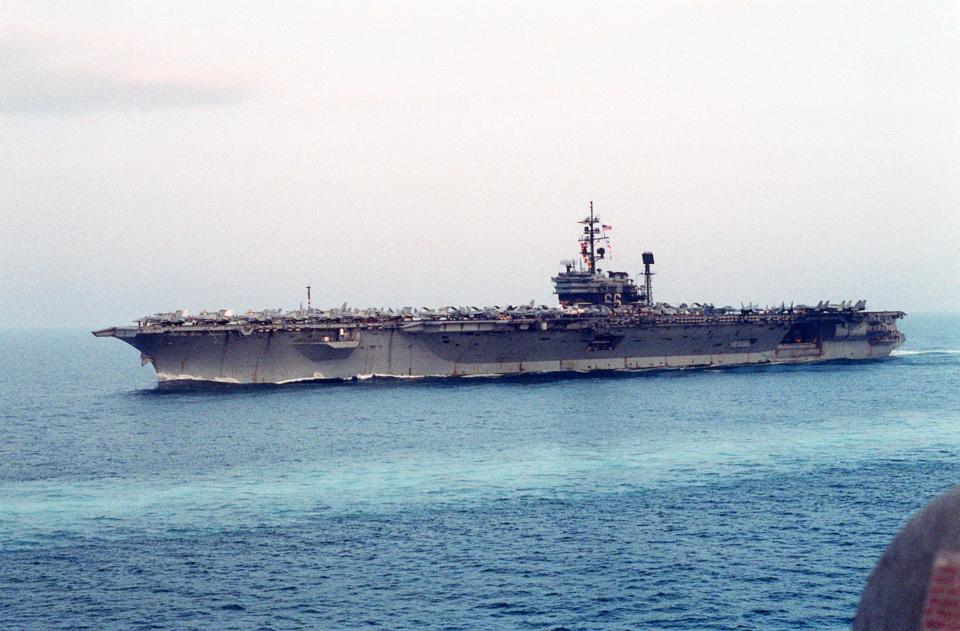
The America played a role in a number of key conflicts throughout history, frequently sailing in the Mediterranean and Atlantic Ocean.
It had three deployments to the Pacific during the Vietnam War. It set a record of no aircraft losses as crews dropped thousands of tons of ordnance over more than 10,000 sorties.
The carrier also served in the Persian Gulf War, launching airstrikes in Iraq and Kuwait during Operations Desert Shield and Desert Storm.
In addition to serving during global conflicts, the USS America also delivered humanitarian aid and conducted evacuations during natural disasters and humanitarian crises.
Documenting life at sea
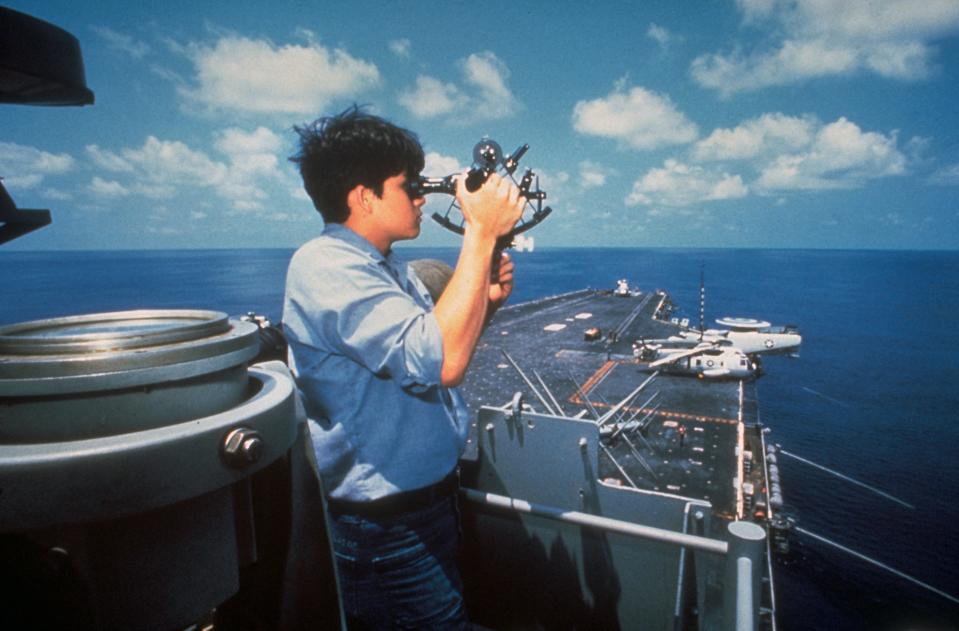
Jim Preston, a now-retired US Navy photojournalist, captured daily operations aboard the America in a piece for the Navy's "All Hands" magazine.
"It was unlike anything I had ever witnessed before or after over my photography career," Preston wrote in an essay. "Danger is everywhere, and you are constantly aware of it, given the noise of afterburners at full blast as the four catapults send aircraft off the bow and waist cats."
Deployed life
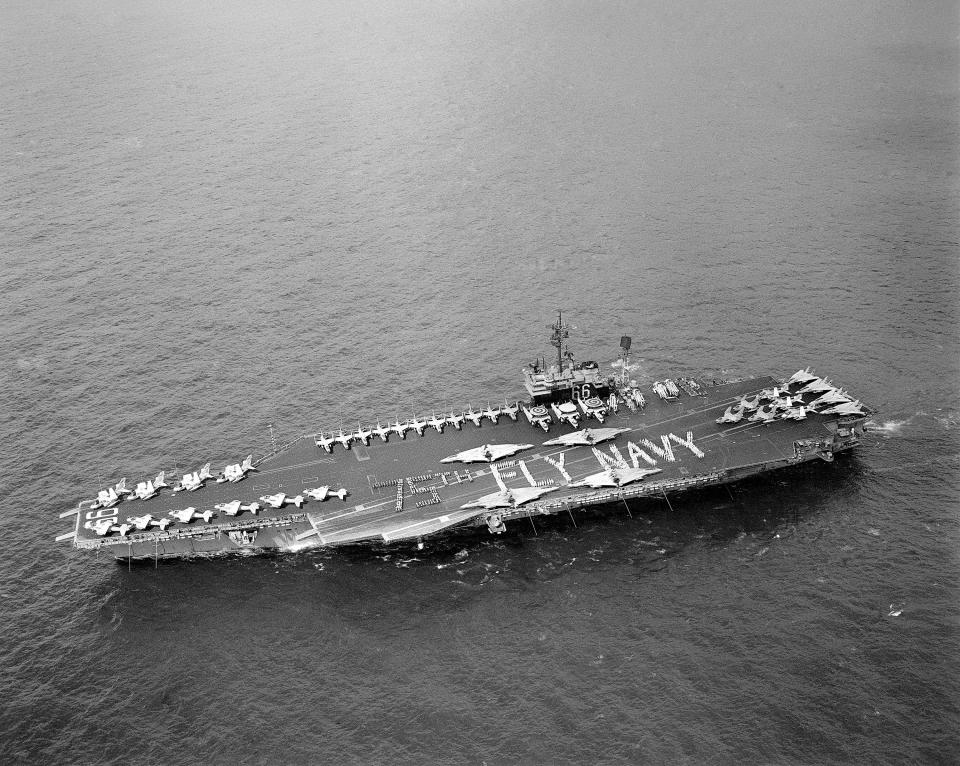
Preston focused his photography on life aboard the ship, showing sailors during the long deployments at sea and how they coped with being away from their families for months on end.
After Preston's article went to print, he said the spouse of a Navy sailor reached out to him, expressing tearful gratitude for helping her understand what her husband goes through on his deployments at sea.
Forced into retirement, then demolition
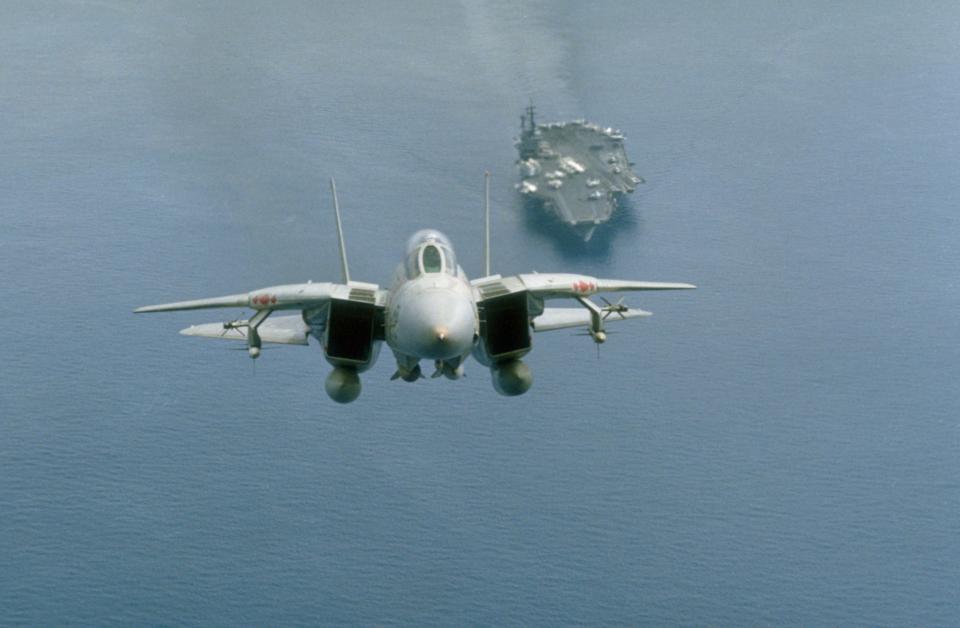
Through the Navy's Service Life Extension Program (SLEP), the Navy spent $785 million on extensive refitting and repair on USS Kitty Hawk and another $800 million on USS Constellation.
Unlike its sister ships, USS America never underwent a repair overhaul to modernize the ship and its equipment that would have extended its service life until 2010.
As global tensions and conflicts wound down following the Cold War, the US curbed its military spending, and budget cuts and shifting priorities forced it into retirement after more than three decades of service.
The ship decommissioned in August 1996 and spent years moored at the Naval Inactive Ships Facility in Philadelphia.
Nearly a decade after decommissioning, the America was later towed hundreds of miles off the coast of Virginia in 2005 for a classified Navy live-fire exercise.
The exercise, dubbed "SinkEx," was intended to test the carrier's capacity to withstand battle damage and improve the durability of future ship designs.
'One final and vital contribution to our national defense'
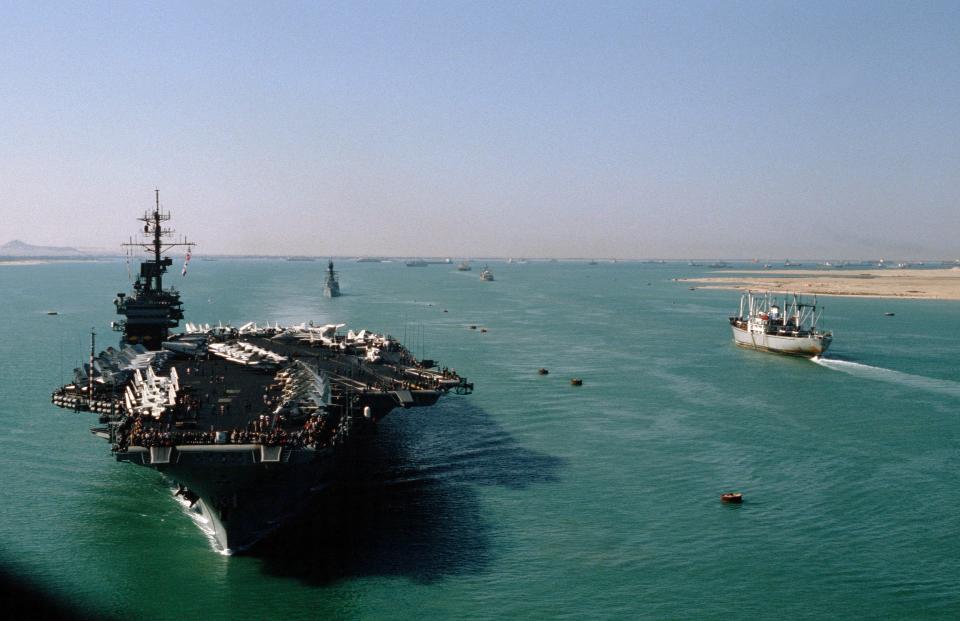
Some veterans who served aboard USS America were against seeing such an end for the storied carrier and pushed for its preservation as a museum.
But Adm. John Nathman, then-vice chief of naval operations, emphasized the importance of the America's "final and vital contribution to our national defense."
"I know America has a very special place in your hearts, not only for the name but also for your service aboard her," he said at the time. "I ask that you understand why we selected this ship for this one last crucial mission and make note of the critical nature of her final service."
Nathman, who is now retired, said the exercise would consist of a "variety of comprehensive tests above and below the waterline collecting data for use by naval architects and engineers in creating the nation's future carrier fleet."
"America's legacy will serve as a footprint in the design of future carriers — ships that will protect the sons, daughters, grandchildren, and great-grandchildren of America veterans," he said.
Built to take a beating
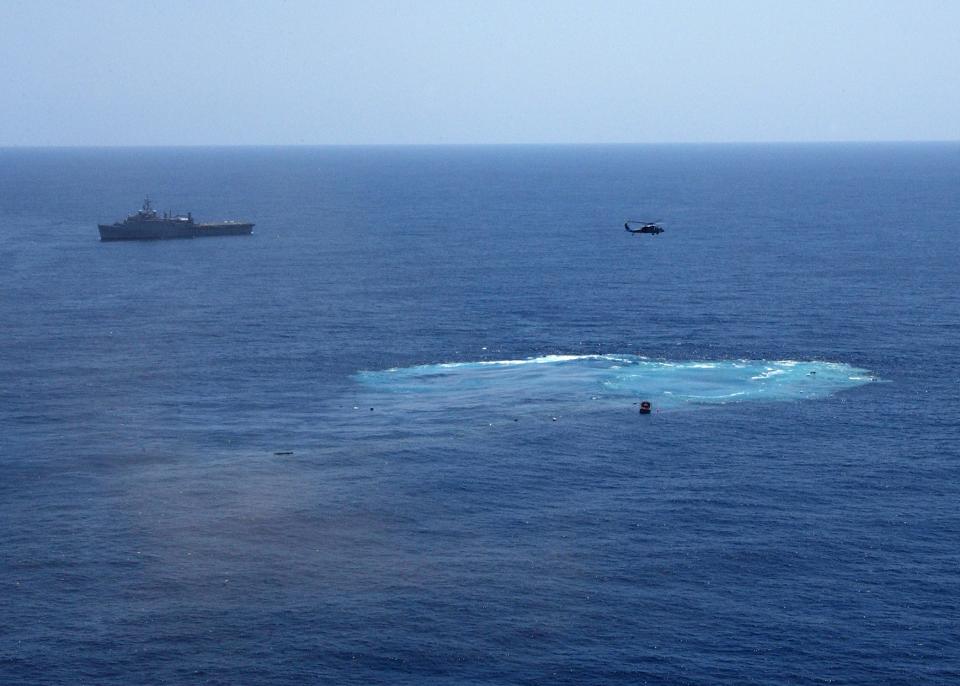
But the job was easier said than done.
The flattop was hammered with explosions above and below the surface, the latter simulating attacks by torpedos in a real combat situation intended to break a ship's keel. The empty ship was also battered by missiles and bombs. The Navy observed the ship's destruction from afar as well as through monitoring systems installed throughout the carrier.
After four weeks of bombardment, the America still remained afloat.
It became clear that the ship wasn't going down by conventional methods, so the Navy had to scuttle the ship with charges placed onboard, opening holes in its double-layered hull for it to finally sink at 11:30 a.m. on May 14, 2005.
The Navy kept most of the findings of the SinkEx classified, and only two photos are known to be released of the historic moment.
The ship, still in one piece, sank nearly 17,000 feet below the surface of the Atlantic, somewhere between South Carolina and Bermuda. The exercise marked the first and only time a modern US carrier has been sunk.
The USS America (CV-66), a Kitty Hawk-class aircraft carrier, was scuttled in 2005 following a distinguished service career spanning over three decades. https://t.co/Oyed4Uk6SM
— National Interest (@TheNatlInterest) May 13, 2024
Tough to kill, but not impossible
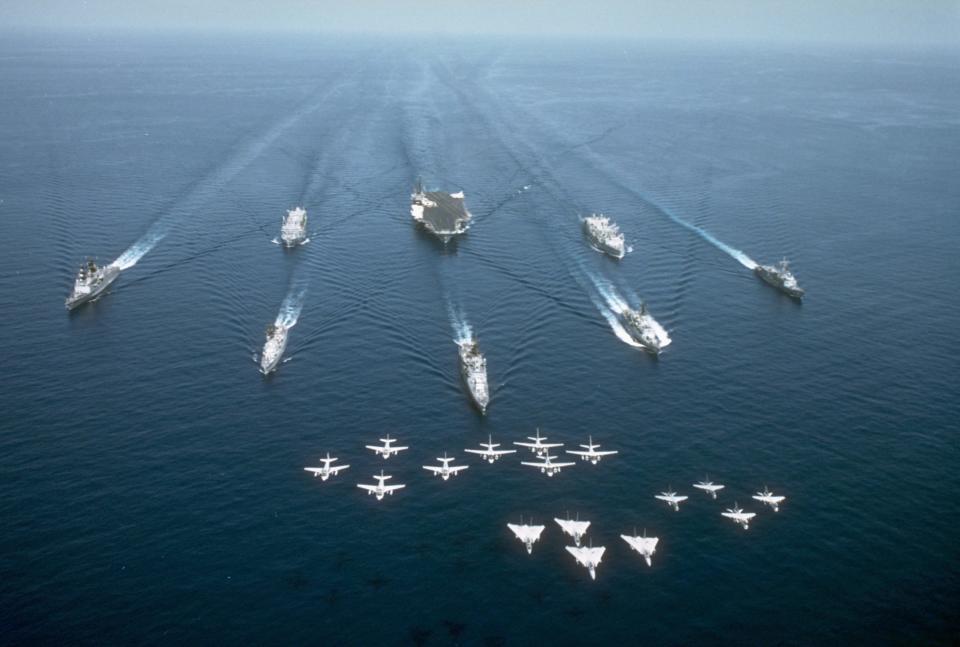
Although a supercarrier's massive size makes it an easy-to-spot target, the ship is surrounded by armed warships to protect it by whatever means necessary.
"You have to launch hundreds of weapons at the carrier strike group to even get a few of them through," Bryan Clark, a former US Navy officer and director of the Hudson Institute's Center for Defense Concepts and Technology, told Business Insider's Ryan Pickrell in 2019.
However, with enough firepower, the battle group could be overwhelmed, and while supercarriers are certainly tough to kill, it's not impossible.
"Given enough time and weapons, you can sink a carrier," Clark said. "But, if you have defenses, people doing damage control, and propulsion, the carrier can take damage and drive away to eventually come back."
Read the original article on Business Insider

